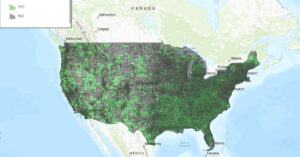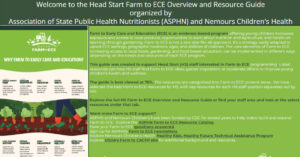Posts Tagged ‘cacfp’
Practical Strategies for Family Style Dining in CACFP ($)
Family style dining is a meaningful way to support children’s development, promote healthy eating and create a sense of community at meal times.
Read MoreSnack-tacular Celebrations ($)
Take a fun and flavorful journey that will spark your creativity in developing easy, nutritious snacks. Celebrate every day with a new snack idea. Come hungry for ideas and leave with a snack resource to help you serve a variety of foods to those in your care.
Read MoreFY26 Area Eligibility Map Updated
Back to Blog Back to Blog FY26 Area Eligibility Map Updated September 29, 2025 USDA announced that the CACFP and SFSP Area Eligibility Mapper has been updated for fiscal year 2026. Why It Matters Census data and school data are the two primary sources that may be used to determine whether a site is area…
Read MoreHead Start Farm to ECE Overview and Resource Guide
Our partners at the Association of State Public Health Nutritionists (ASPHN) and Nemours Children’s Health are pleased to share the Head Start Farm to ECE Overview and Resource Guide.
Read MoreSponsor Spotlight: Maria Rincon of EOAC Head Start
Maria Rincon is the Nutrition Manager for the Economic Opportunities Advancement Corporation (EOAC). Hear how she and her team ensure nutritious meals to over 500 infants and children through their Head Start centers.
Read MoreUSDA Announces $72.9 Million in Specialty Crop Block Grant Funding
USDA announced $72.9 million in grant funding to states through the Specialty Crop Block Grant Program. The purpose of the SCBGP is to enhance the competitiveness of specialty crops, including fruits, vegetables, tree nuts, dried fruits, horticulture and nursery crops (including floriculture).
Read MoreHHS Invests $61.9 million to Support Nutrition in Head Start
The U.S. Department of Health and Human Services (HHS) announced over $61 million in funding to over 290 Head Start programs to support nutrition services. Recipients will implement their nutrition initiatives over the next year, but this investment will have a long-term impact on Head Start families.
Read MoreSweet Changes Ahead: Preparing for CACFP’s New Sugar Rules
Beginning October 1, 2025, the Child and Adult Care Food Program (CACFP) will implement new regulations requiring limits on added sugars in breakfast cereals and yogurts served in child and adult care settings.
Read MoreGluten-Free Diets
The gluten-free diet has generated a lot of attention in recent years, with some praising its benefits. However, for people who cannot eat gluten due to medical reasons, such as celiac disease or gluten sensitivity, this diet is not a choice but a necessity. Our Partners at the Institute of Child Nutrition defines gluten and how it affects certain individuals, lists foods containing gluten, identifies gluten-free foods, and reviews how to accommodate children who require a gluten-free diet.
Read MoreWhite House Releases Make Our Children Healthy Again Strategy
On September 9, 2025, the White House released the Make Our Children Healthy Again Strategy Report which outlines actions of the executive branch to address the childhood chronic disease crisis.
Read More








